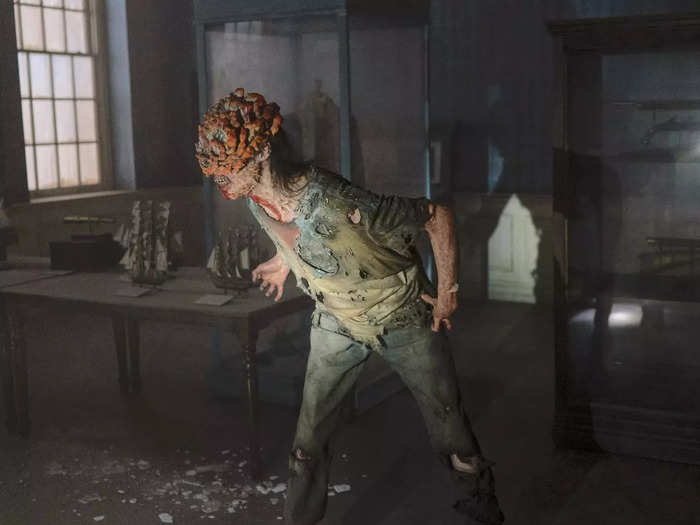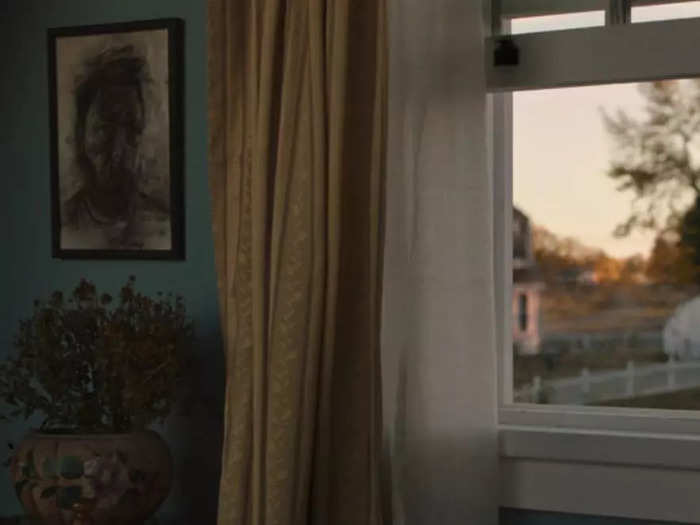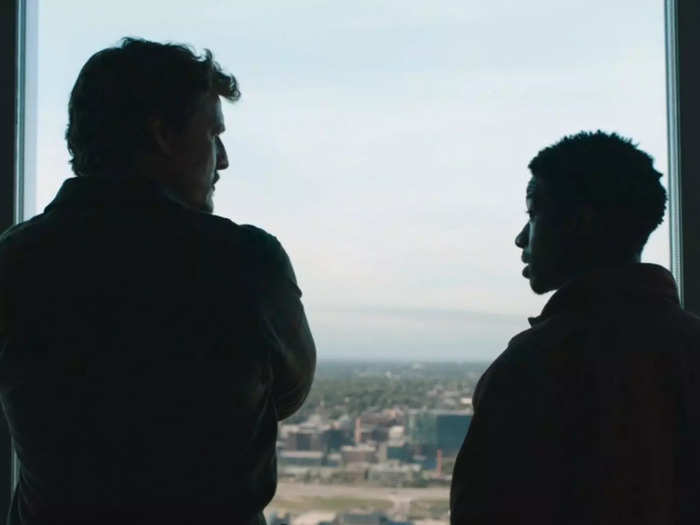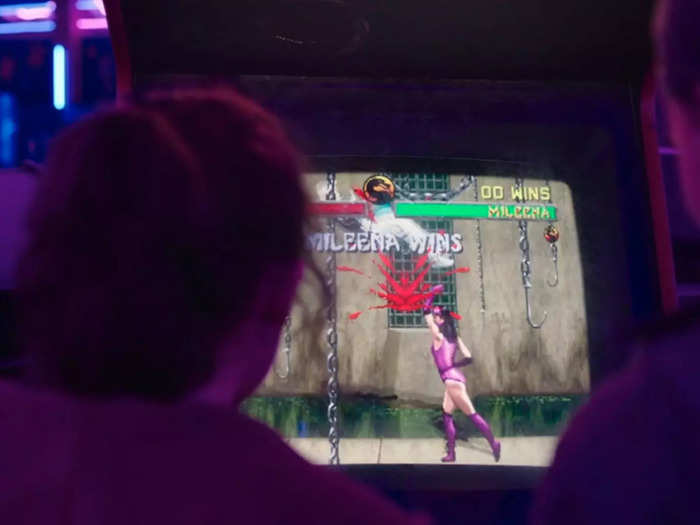- Home
- entertainment
- news
- 17 behind-the-scenes secrets you probably didn't know about 'The Last of Us'
17 behind-the-scenes secrets you probably didn't know about 'The Last of Us'

- "The Last of Us," starring Pedro Pascal and Bella Ramsey, takes place in a post-fungal pandemic world.
- Pascal, Ramsey, and members of the crew have offered up tons of behind-the-scenes anecdotes.
Bella Ramsey wore a chest binder most of the time while filming.

In an interview with GQ, Ramsey, who told the New York Times that their gender "has always been very fluid," said they wore a chest binder "90 percent" of the time while shooting the series.
"Which probably isn't healthy, like please bind safely," Ramsey told GQ.
Chest binding is a practice that minimizes the appearance of a person's chest, and can alleviate gender dysphoria. Experts previously told Insider that it's important to wear a properly sized binder and limit use to eight hours.
Co-creator Craig Mazin would apparently quote 'Game of Thrones' at Ramsey on set.

During a game segment on HBO Max's YouTube channel with Pascal, Ramsey correctly identified one of their own lines from "Game of Thrones" as Lyanna Mormont: "We're not a large house, but we're a proud one."
According to the actor, Mazin wouldn't have had any trouble identifying the line either. In fact, he apparently quotes it frequently.
"He says that line to me far too often," Ramsey said.
Ramsey and Pedro Pascal had nicknames for each other.

In a video posted to HBO Max's social channels, Pascal said that Ramsey was his "blessing," and shared that he called them "Bellie" — a portmanteau of Ramsey's first name and that of their character, Ellie.
In response to the video, Ramsey wrote on Twitter, "HOW I MISS YOU I really really miss you. My Pedge."
Pedro Pascal's 'SNL' coma sketch voice was actually a bit from 'The Last of Us' set.

Pedro Pascal said on "Late Night with Seth Meyers" that the silly voice that he used during a sketch for his "Saturday Night Live" hosting gig was a gift from the HBO show's set.
"We would talk like that on the set of 'The Last of Us,'" Pascal said.
"I'm telling you, it's very contagious," Pascal told Meyers. "It will not stop. It spread like a fungus amongst the set."
Later in a BBC Radio 1 interview tied to season three of "The Mandalorian," Pascal said "part of the enormous inspiration behind the voice" was hairstylist Coco Ullrich, who also was "responsible for the silver daddy hair of Joel" in "The Last of Us."
The show nixed the fungal spores from the video game to avoid having to put gas masks on the actors.

In "The Last of Us" video game, the characters regularly wear gas masks so as to not be infected by fungal sports able to transmit the cordyceps fungus. That becomes a bit more of a sticking point on a television show, where you need to see the actors' faces.
Co-creator Neil Druckmann told Polygon that with gas masks, "we lose so much, which is maybe the most important part of the journey is what's going on inside behind their eyes, in their soul, in their beings. For that logistical reason, we were like, 'Let's find a different vector.'"
Episode three featured Linda Ronstadt's 'Long, Long Time' because it was an ode to 'middle-aged love.'

Mazin told IndieWire that he went on a long search for the perfect song for both Bill and Frank to bond over in episode three. Eventually, SiriusXM host Seth Rudestsky provided the perfect recommendation.
"The intention was to show the arc of commitment," Mazin told IndieWire. "I'm in my 26th year of marriage, and middle-aged love is a thing. And it's a different thing than love in your 20s and new love. There's something that gets kicked off by commitment over time."
Bill and Frank's town in episode three was built entirely from scratch.

Production designer John Paino told Insider that the town, along with the cul-de-sac in episode five and the Boston QZ, were all constructed from scratch. Paino said that the set design was based on the idea that Bill's family may have founded the town, and thus had the "nicest house."
Frank's art was created custom for the show.

Frank regularly paints portraits of Bill and the town in episode three, as he and his partner age. Paino told Insider that the art was custom-made for the show by an artist in Calgary.
"We gave them some examples of what we were going for and pictures of Frank and Bill," he said. "We also took snapshots of the set as it was being done so that the person could paint the church, the Civil War monument that was there, flowers, things like that, so it didn't feel like it was just made up."
Episodes four and five were set in Kansas City because it was easier to recreate than Pittsburgh.

Mazin said on HBO's "TLOU" podcast that the show changed the setting from Pittsburgh to Kansas City given that they were filming in Canada.
"We had certain environments we knew we could shoot in, because we were shooting in Alberta, largely around Calgary, a little bit in Edmonton, and it literally looked closer to Kansas City," Mazin said. "It literally, I think, came down to that. It was just harder to manufacture Pittsburgh in that place."
It took four weeks to film the cul-de-sac scene at the end of episode five.

Paino told Insider that the sequence in the cul-de-sac was "one of the few" in the show that was storyboarded, given its multitude of complex elements. All in all, Paino said, the sequence took about four weeks to shot.
"It sounds like four weeks is a lot, but it's also at night when things are harder to do," Paino told Insider. "But everyone was safe, no one got hurt, so that's the best you can hope for."
The Bloater costume wasn't just heavy, but slimy, too.

Adam Basil, who played the terrifying Bloater in episode five of "The Last of Us," told Entertainment Weekly that he estimated the full costume for the monster weighed between 40 and 80 pounds.
"They use poppers, these metal hooks, to click it in," he told EW. "It's a lot of hooks and there's a lot of pressure holding it all together, 'cause you think the force of the body wants to pull this thing apart. So you really clicked into it."
Prosthetics designer Barry Gower told Variety that the suit was "very slimy and wet" because it was covered in a "gel-like solution" designed to make the textures pop on camera.
"We were repeatedly going in and gelling him up more, covering him in this lube so he was nice and shiny."
The Bloater became 'less scary' when actors saw him moving around on set, Melanie Lynskey said.

Lynskey, who played Kathleen in episodes four and five, told Variety that the Bloater's fear factor was toned down a bit by the fact that Basil needed help getting around on set while suited up.
"Somebody's helping him move around and holding a bottle of water with a straw up," Lynskey said. "That makes him a little bit less scary when you see him with his Fiji water."
Pedro Pascal cried during every take of Joel and Tommy's conversation in episode six.

Jasmila Žbanić, who directed the episode, told Variety that Pascal cried even when he wasn't being filmed for the benefit of his scene partner Gabriel Luna.
"It was a very emotional scene for Pedro. I was filming him as a second; first, we filmed Gabriel, and then I noticed that each time we repeated, Pedro was crying," Žbanić said. "He was not on camera, but he was crying because he was giving his partner everything so that he can act."
The crew had to replace all the screens in the mall arcade games in episode seven.

Paino, the production designer, told Insider that the arcade in episode seven's mall was "so awesome" to create, but presented some difficulties due to filming dated technology.
"Old TV screens, what we call CRTS, cathode ray tubes, they all roll on digital films, so the image just goes like —" Piano described to Insider, waving his hand up and down. "So all of those had to be rebuilt and with monitors that were rigged so that we would see them when they're on."
The crew also had to restore — and then decay — the carousel in episode seven.

Paino told Insider that the carousel in the episode had to be brought into the mall, and rigged so that it was suitable for filming. According to Paino, it was "quite nice," and his crew painted and restored it before making it "look like crap again" to fit the show's post-apocalyptic aesthetic.
Ramsey said that it was about 1.4 degrees Fahrenheit when filming an outdoor scene in episode eight.

Ramsey told GQ that the sequence where Ellie first meets David (Scott Shepherd) and James (Troy Baker) outdoors was filmed on the coldest day of the entire shoot at about 1.4 degrees Fahrenheit.
"My voice sort of changes a bit in that scene," Ramsey told GQ. "Hearing it back — I've just heard the ADR, I haven't actually seen the episode yet — it's so hard to speak normally when it's that cold, like your mouth just doesn't work."
The word 'zombie' wasn't a favorite on set.

In "The Last of Us," those infected with the cordyceps fungus aren't referred to as "zombies" — they're "Infected."
Cinematographer Eben Bolter told The Credits that they "weren't allowed to say the Z word on set," saying that it was "like a banned word."
Paino, however, had a milder take. The production designer told Insider that while his time on set was minimal, he thought the word was perhaps "frowned upon," even if he wasn't certain of an outright ban.
"I think it might have been unofficially banned, but it's not like, 'There's a jar over there and $50 in if you say zombie,'" Paino said."
Mazin, however, put the notion of a zombie ban to rest in a post-finale interview with GQ UK.
"I'm still angry at Eben Bolters for that! I text him like 'Eben! Nobody banned any words anywhere?!'" Mazin said.
Popular Right Now
Advertisement